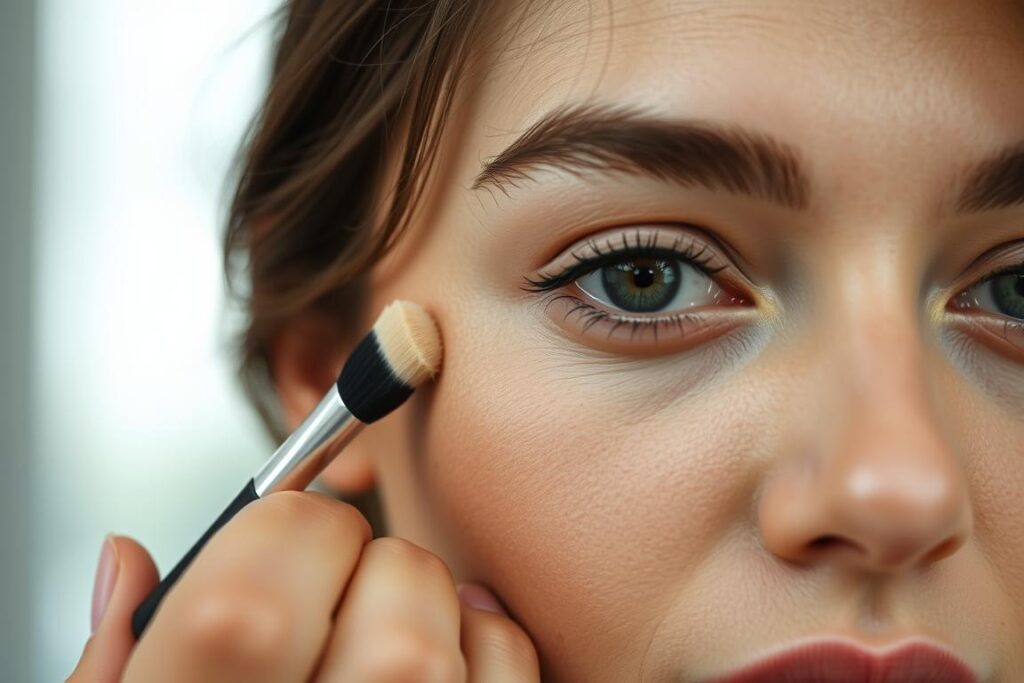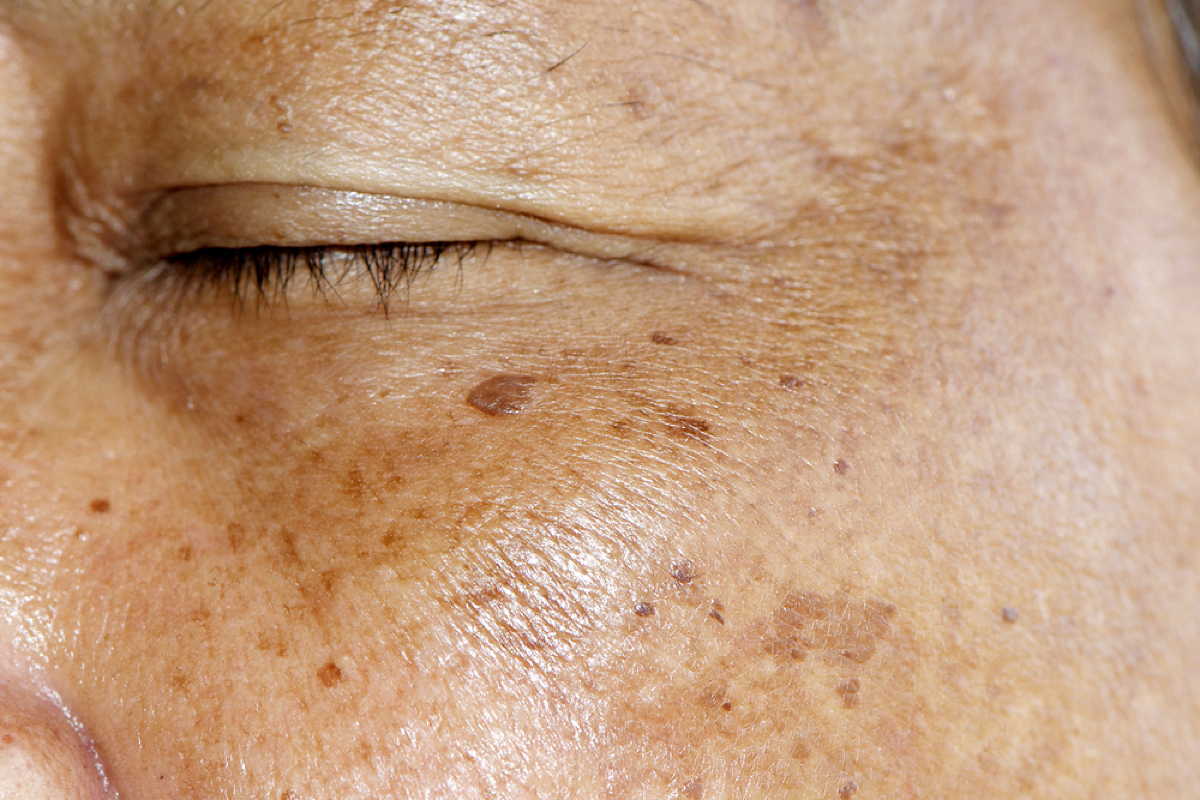What helps against pigment spots?
Almost everyone is familiar with them: unwanted brown spots on the skin, which often appear on the face, hands or décolleté. These discolorations, also known as pigment spots, are caused by excessive production of the skin pigment melanin.
Although they are usually medically harmless, they can disturb the appearance of the skin. The good news is that there are effective methods to reduce pigmentation spots. In this article, you will learn more about the causes of hyperpigmentation and how you can minimize them with the right skin care and professional treatment methods.
You can prevent pigmentation spots and keep your skin healthy with targeted care and the right sun protection.
What are pigment spots?
Pigment spots are discolorations of the skin caused by an accumulation of melanin. They can appear in various shapes and colors and are often harmless.
The skin is subject to constant change and pigmentation spots can be caused by various factors such as sun exposure, hormonal changes or genetic predisposition.
Different types of pigment spots
There are various types of pigment spots, which differ in their cause and appearance.
Age spots (lentigo solaris)
Age spots are a common form of pigmentation that occur particularly in older people. They are caused by years of sun exposure and are usually harmless.
Melasma (chloasma)
Melasma is a pigmentation spot that often appears during pregnancy or due to hormonal changes. They typically appear on the face and can be intensified by sun exposure.
Freckles (ephelides)
Freckles are small, punctiform pigment spots that are genetically determined and occur particularly in people with fair skin. They can become more intense when exposed to sunlight and fade in months with little sunlight.
- Freckles often appear in childhood and can diminish with age.
- They typically appear symmetrically on the face, but can also occur in other sun-exposed areas.
- Freckles are considered harmless and are perceived by many people as an attractive feature.
As you can see, pigmentation spots can have different causes and look different. It is important to keep an eye on them and see a dermatologist if necessary.
Causes for the development of pigment spots
Pigmentation spots can appear on your skin for a variety of reasons. These skin changes can be triggered by a combination of factors ranging from environmental factors to internal processes in your body.
UV radiation as the main cause
One of the main causes of pigmentation spots is UV radiation from the sun. When your skin is exposed to the sun, it produces more melanin to protect itself from the harmful rays. This can lead to an uneven distribution of melanin and thus to the formation of pigmentation spots.
Hormonal changes
Hormonal fluctuations in your body can also contribute to the formation of pigmentation spots. During pregnancy or when taking hormones, changes in hormone levels can occur that affect melanin production and lead to pigmentation spots.
Skin injuries and inflammation
Skin injuries and inflammation can lead to localized pigmentation spots as a reaction of your body. After injuries such as cuts or burns have healed, more melanin can be produced in these areas, leading to so-called post-inflammatory hyperpigmentation. Gentle treatment of skin injuries and inflammation can reduce the risk of such pigmentation spots developing.
Distinguishing harmless pigment spots from dangerous skin changes
You should know how to distinguish harmless pigment spots from dangerous skin changes. Pigment spots can be harmless, but in some cases they can indicate a serious condition.
The ABCDE rule for self-examination
A simple method for checking pigment spots is the ABCDE rule. A stands for asymmetry, B for border, C for color, D for diameter and E for development. If a pigment change is asymmetrical, has irregular borders, has different shades of color, has a diameter of more than 6 mm or is changing, you should consult a dermatologist.
When you should see a dermatologist
There are certain signs that you should consult a dermatologist. These include new pigment spots that grow quickly or change in shape, color or size. It is also advisable to make an appointment with a dermatologist if an existing spot starts to itch or bleed. In general, an annual skin cancer screening is recommended, especially if you have a lot of pigment spots or belong to a risk group.
Only a dermatologist can determine with certainty whether these are harmless pigment spots or signs of a more serious illness.

What helps against pigment spots?
There are several treatment options available to remove pigmentation spots. Your dermatologist can help you find the best method for your individual needs.
Brightening active ingredients in creams and serums
Creams and serums with lightening active ingredients such as vitamin C, arbutin or thiamidol can help to reduce pigmentation spots. These products can be applied directly to the affected areas of skin and support skin lightening.
Chemical peelings
Chemical peels are another effective method of treating pigmentation spots. By applying a special solution, the top layer of skin is removed, which can reduce the pigmentation spots.
Laser treatment and other dermatological procedures
Laser treatments and other dermatological procedures offer a professional solution for stubborn pigment spots. In laser treatment, pulses of light are targeted at the pigmented areas, destroying the melanin particles. IPL technology works in a similar way, but uses a broader light spectrum and is particularly suitable for larger areas of pigmentation.
It is important that you seek advice from an experienced dermatologist before treatment in order to choose the best method for your particular case and minimize possible risks.
Bleaching creams and serums for treatment
If you want to treat pigmentation spots effectively, whitening creams and serums are a good choice. These products can be used regularly at home, but it is advisable to seek advice from a dermatologist beforehand.
Active ingredients such as arbutin, vitamin C and thiamidol
Active ingredients such as arbutin, vitamin C and thiamidol are contained in many lightening creams and serums. They help to lighten pigment spots by inhibiting melanin production.
Correct application for optimum results
The correct use of lightening skin care products is crucial for success in treating pigmentation spots. Start by thoroughly cleansing your skin to remove dirt and sebum.
- Apply the products specifically to the affected areas.
- Make sure to avoid the eye area.
- Always combine the use of lightening products with a high level of sun protection (at least SPF 30) during the day.
By using these products regularly and following these tips, you can effectively treat your pigmentation spots and lighten your skin.
Professional treatment methods at the dermatologist
If you want to combat pigmentation spots effectively, professional treatment methods from a dermatologist offer a promising solution.
Chemical peels in practice
Chemical peels are a popular method for treating pigmentation spots. A solution is applied to the skin, which removes the top layer of skin and thus reduces the pigmentation spots. However, this method is not suitable for everyone, especially people with very sensitive skin or neurodermatitis should exercise caution.
Laser and IPL technology
Laser and IPL (Intense Pulsed Light) treatments are other effective methods for removing pigmentation spots. They work by specifically destroying the pigments without damaging the surrounding skin. These technologies offer a precise and gentle treatment for many skin types.
Who are these treatments suitable for?
Professional treatments are particularly suitable for people with stubborn pigmentation spots that do not respond adequately to topical treatments. However, it is important that you consult a dermatologist before treatment to determine the best method for your skin. People with very sensitive skin, atopic dermatitis or dark skin types should take special care.
Preventing pigmentation spots – how to protect your skin
To prevent pigmentation spots, it is important to consistently protect your skin. Comprehensive protection covers several aspects, from the right skin care to changes in your everyday behavior.
Daily sun protection with a sufficient sun protection factor
Daily sun protection is crucial to prevent pigmentation spots. Use a product with a sun protection factor tailored to your skin type. A high sun protection factor (SPF 50+) is particularly advisable during pregnancy or when taking hormonal contraceptives.
Protective clothing and accessories
In addition to cream, protective clothing and accessories such as hats and sunglasses can protect your skin from UV radiation. These measures are particularly important if you spend a lot of time outdoors.
Special caution with hormonal changes
During hormonal changes, such as during pregnancy or when taking the pill, your skin is particularly susceptible to pigmentation spots. Antioxidant-rich skin care with vitamin C or E can support your skin. It is advisable to speak to your dermatologist about suitable skincare products.
Concealing pigmentation spots with make-up
With the right products, you can successfully conceal pigmentation spots and make your skin glow.

Concealer and foundation with high coverage
Concealers and foundations with high coverage are ideal for effectively covering pigmentation spots. These products help to even out imperfections and create an even complexion.
When choosing, you should look for high coverage and good skin compatibility in order to achieve optimal results.
Tinted sun protection products for everyday use
Tinted sun protection products offer a practical 2-in-1 solution for everyday use. They easily conceal pigmentation spots and protect your skin from further UV exposure at the same time.
Make sure you have a sufficiently high sun protection factor (at least SPF 30) and broad-spectrum protection against UVA and UVB rays to provide your skin with optimum protection.
Special situations: Pregnancy and hormone intake
Pigment spots can occur in special life situations such as pregnancy or hormone intake. Hormonal fluctuations play a decisive role here.
Melasma during pregnancy
During pregnancy, women can develop a particular form of pigmentation known as melasma or chloasma. These hyperpigmentations often appear on the face and are caused by the hormonal changes during this time.
It is important to ensure adequate sun protection during pregnancy, as UV radiation can increase the risk of developing melasma.
Pigment spots caused by the pill
Taking hormonal contraceptives can lead to the development of pigmentation spots in some women, which are similar in appearance to melasma during pregnancy. These hormone-induced hyperpigmentations can be the first sign that your skin is sensitive to hormonal changes.
| Cause | Signs | Measures |
|---|---|---|
| Hormonal contraceptives | Pigment spots, hyperpigmentation | Change of contraceptive method, sun protection |
| Pregnancy | Melasma, pigment spots on the face | Sun protection, skin care |
Your path to an even complexion
With the right care and treatment, you can reduce your pigmentation spots and achieve an even complexion. Getting there requires patience, consistency and a customized strategy. Every skin is unique and what works well for one person may not necessarily work for another.
It is therefore important to try out different methods and pay attention to how your skin reacts. A holistic approach that combines prevention, care and targeted treatment promises the best long-term results for your skin. Remember that improving hyperpigmentation takes time.
Expect to wait several weeks to months before you see noticeable results. It is also important to develop a healthy approach to your complexion and accept that small imperfections can be part of your natural beauty. With the right knowledge and the right products, you can even out your individual skin tone and achieve a radiant, even complexion.






